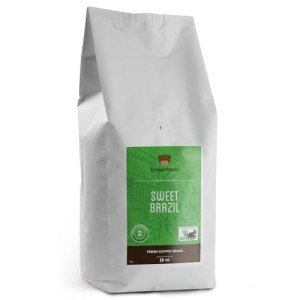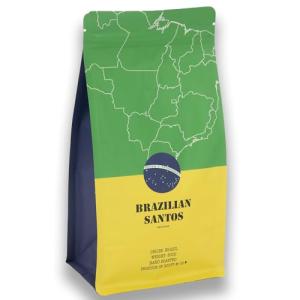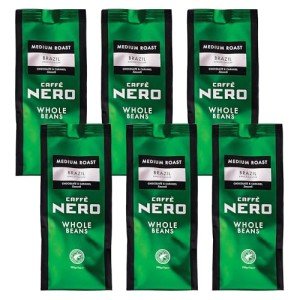Exploring Brazil Fazenda Campestre No 109 Whole Bean Coffee: A Taste of Excellence
Brazil has long been recognized as one of the world’s foremost coffee producers, renowned for its rich flavor profiles and diverse coffee-growing regions. Among the multitude of offerings from this South American giant, Fazenda Campestre No 109 Whole Bean Coffee stands out as a premium choice for coffee connoisseurs. This guide delves into the unique aspects of this particular coffee, from its cultivation to tasting notes, helping readers appreciate the journey of each cup.
Understanding Fazenda Campestre
Fazenda Campestre is situated in the heart of the Cerrado Mineiro region in Brazil, an area celebrated for its distinct climate, soil types, and altitude—elements crucial for producing high-quality coffee beans. The farm is known for its sustainable practices and commitment to quality, ensuring that each bean is nurtured from seed to harvest.
Key Features of Fazenda Campestre:
- Location: Cerrado Mineiro, Brazil
- Altitude: Ranges between 900 to 1,200 meters above sea level
- Climate: A tropical climate with a distinct dry season, optimal for coffee cultivation
- Cultivation Practices: Focus on sustainability and environmental protection
The Coffee Cultivation Process
The journey of Fazenda Campestre No 109 whole bean coffee starts well before it reaches consumers’ cups. Understanding the cultivation process can significantly enhance one’s appreciation of the brew’s complexities.
-
Selection of Varieties: Fazenda Campestre primarily grows Arabica beans known for their premium quality. Different varieties are planted to achieve a range of flavor profiles.
-
Harvesting: Coffee cherries are hand-picked, ensuring that only the ripest cherries are selected. This meticulous process contributes significantly to flavor.
-
Processing: The farm utilizes both natural and washed processing methods. The natural method involves drying the whole cherries under the sun, allowing the beans to absorb flavors from the fruit, while the washed method separates the pulp from the beans, resulting in a cleaner taste.
-
Drying: After processing, beans are carefully dried to achieve optimal moisture content. This is a crucial step that influences the final flavor.
-
Milling and Grading: Once dried, the beans are hulled, graded, and sorted based on size, density, and quality before they’re packaged for sale.
The Flavor Profile of Fazenda Campestre No 109
Fazenda Campestre No 109 coffee is celebrated for its well-rounded flavor profile, which embodies the essence of Brazilian coffee. When tasting this coffee, consumers can expect a burst of flavor characterized by the following notes:
- Fruity: Bright notes of red fruits, such as cherries and berries, provide a refreshing taste.
- Nutty: Subtle hints of nuts add a layer of complexity and richness.
- Chocolate: A delightful cocoa undertone often emerges, contributing to the smooth finish.
- Body: The coffee typically features a medium body, making it versatile for various brewing methods.
Brewing Recommendations
To fully appreciate the intricacies of Fazenda Campestre No 109, choosing the right brewing method is essential. Here are some popular methods and tips to enhance your coffee experience:
-
French Press:
- Grind Size: Coarse
- Brewing Time: 4 minutes
- Water Temperature: 200°F (93°C)
-
Pour-Over:
- Grind Size: Medium
- Brewing Time: 3–4 minutes
- Water Temperature: 200°F (93°C)
-
Espresso:
- Grind Size: Fine
- Brewing Time: 25–30 seconds
- Water Temperature: 190°F (88°C)
-
Cold Brew:
- Grind Size: Coarse
- Brewing Time: 12–24 hours
- Water Temperature: Room temperature
Sustainability and Ethical Practices
Fazenda Campestre is committed to sustainability and practices that protect the environment and support local communities. Here are some aspects of their responsible farming methods:
- Water Conservation: Implementing efficient water usage strategies.
- Organic Practices: Reducing reliance on chemicals and pesticides.
- Community Support: Engaging in programs that support local farmers and communities.
- Biodiversity: Planting shade trees and maintaining ecological balance.
Frequently Asked Questions (FAQs)
What is the best way to store whole bean coffee?
Whole bean coffee should be stored in an airtight container in a cool, dark place. Avoid exposure to light, moisture, and air to preserve freshness.
How long can I keep whole bean coffee?
Whole bean coffee is best consumed within 2–4 weeks after it has been roasted. Beyond this period, the flavor may start to degrade.
Can I use whole bean coffee for espresso?
Yes, whole bean coffee can be used for espresso. Just make sure to grind it to a fine consistency suitable for espresso machines.
What occasions are best for serving Fazenda Campestre No 109?
This coffee is versatile for any occasion, whether it’s a cozy morning at home, an afternoon pick-me-up, or serving guests during a gathering. Its rich flavors are suitable for both casual and elegant settings.
Fazenda Campestre No 109 whole bean coffee exemplifies the excellence of Brazilian coffee, offering a rich tapestry of flavors that cater to both subtle and bold palates. Its meticulous cultivation process, commitment to sustainability, and exceptionally vibrant notes come together to create a delightful coffee experience. Whether you are a seasoned coffee aficionado or a curious newcomer, Fazenda Campestre No 109 invites you to savor every sip and explore the rich heritage of Brazilian coffee.







